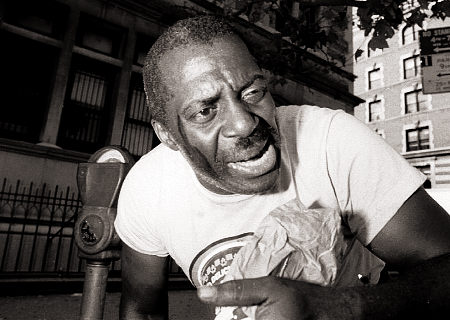CITY JOURNAL
August 8, 2012
Upper West Side Madness
by James Panero
A neighborhood suffers under New York’s housing policy for the homeless and mentally ill.
For years, the Upper West Side of Manhattan has been the site of a war between the forces of gentrification and the social-services industry. In July, for example, the neighborhood saw two murders over consecutive weekends in homeless shelters in the West Nineties. Now comes an organization called Aguila, which is in the process of moving 400 homeless people into a building that it has rented on West 95th Street, where the homeless will be housed alongside existing residents. On August 7, the office of Manhattan Borough President Scott Stringer held a rally to oppose the plan. Though the rally was welcome news, it was disturbingly reminiscent of a 2011 controversy over a similar plan to convert a building called the Alexander, on 94th Street, into a 200-person shelter. The Alexander plan seems to have been abandoned—a victory for Upper West Side residents—but the repetition shows how such proposals will keep popping up until politicians confront some real problems with New York’s treatment of troubled populations.
One of those problems is a piece of 2010 legislation backed, as it happens, by two of the politicians who attended the August 7 rally: New York State Assemblywoman Linda Rosenthal and New York City Councilwoman Gale Brewer. The legislation banned the Upper West Side’s SRO apartment buildings—“single-room occupancy” buildings whose small apartments lack their own kitchens and bathrooms—from operating budget hotels. The law meant that the owners of SRO buildings lost a way of competing with social-services organizations, which try to buy or rent the same buildings and use them as warehouses for homeless or MICA (“mentally ill, chemically addicted”) populations. When you realize that the government pays the social-services organizations up to $3,000 a month per resident, you’ll understand why the hotels legislation opened the door for the organizations to move in.
Though intended to protect existing SRO tenants from being evicted by landlords in search of higher profits, the law has made tenants’ lives worse, not better. When a landlord decides to run an improvised hotel in his building, the building’s services generally improve through the introduction of hotel amenities—a 24-hour concierge, for example. But when a shelter opens in an SRO building, tenants find themselves sharing hallways and bathrooms with a homeless, often drug-addicted population. Since the hotel legislation directly precipitated this latest encroachment of social-services providers, one obvious step is to roll back the law and allow SRO buildings to function as budget hotels once again, so long as they honor the leases of existing tenants.
A second problem involves the “fair share” mandate in the city’s charter, which says that each neighborhood should bear its portion of social services and that no one neighborhood should shoulder an excessive burden. That mandate is clearly being disregarded when the Upper West Side hosts nearly 2,000 “supportive-housing” units and the Upper East Side fewer than 100. In fact, in recent years, the blocks around the Aguila facility have seen half a dozen proposals for homeless shelters and “supportive housing” for MICA patients. “Fair share” should be properly enforced, compelling social-services developers to distribute their facilities equally across the city’s neighborhoods.
A third issue is a remarkable loophole that social-services developers have exploited. By calling a shelter an emergency facility, they can bypass community-approval processes, busing in hundreds of homeless—often in the dead of night—with little more than a letter of warning to the local community board. That’s what happened in the Aguila case. The city should scrap the “emergency” provision.
Fourth, we should start asking why MICA populations are being housed in residential neighborhoods at all. In the 1960s and ’70s, the Kennedy family and then Geraldo Rivera, on ABC, publicized the deplorable conditions at Willowbrook State School, a Staten Island institution for mentally retarded children. The backlash following these reports led to the mass deinstitutionalization of the state’s mentally ill population and a move toward providing social services for these people in smaller facilities located within residential communities. A generation later, we see the disastrous outcome of this shift. While community-located care is purportedly cheaper than institutionalization, one wonders if the cost calculations include the collateral damage to communities: increased crime, drain on other municipal resources, and diminishing property values and tax bases, not to mention the mental tax on residents. Another gigantic cost is borne by jails, which house many of the people who would once have been institutionalized. The time may have come to abandon residential care for the mentally ill and replace it with a new generation of mental-health institutions.
Finally, the Upper West Side needs to look to its future. It needs, for example, to find ways to compete with the outer boroughs now attracting a large share of the city’s young talent and energy. One place to look may be the very SRO buildings that have been the cause of so much concern. With their tiny apartments, these SROs already offer a dorm-like arrangement that would lend itself to student living. With Lincoln Center on one side and Columbia University on the other, the Upper West Side is a natural magnet for the city’s young creative class. Why not reconfigure the SROs to carve out new housing for this population—and in the process, reinvigorate the Upper West Side’s impressive cultural legacy? For that to happen, the community’s leaders need to advance genuine solutions to its problems. And those solutions weren’t on view at the rally.
For more, see my article "Homelessness, inc" (New York Post). My longer article on the Upper West Side appeared in the Summer issue of City Journal and will appear online soon.
Here is complete video of the 95th Street Rally of August 7, 2012:

















